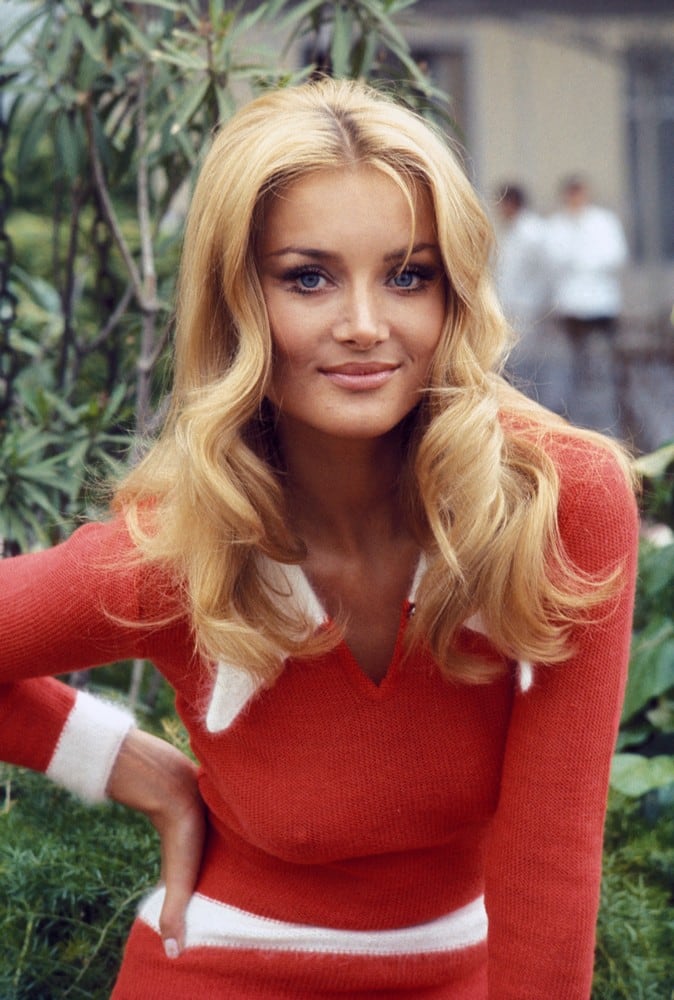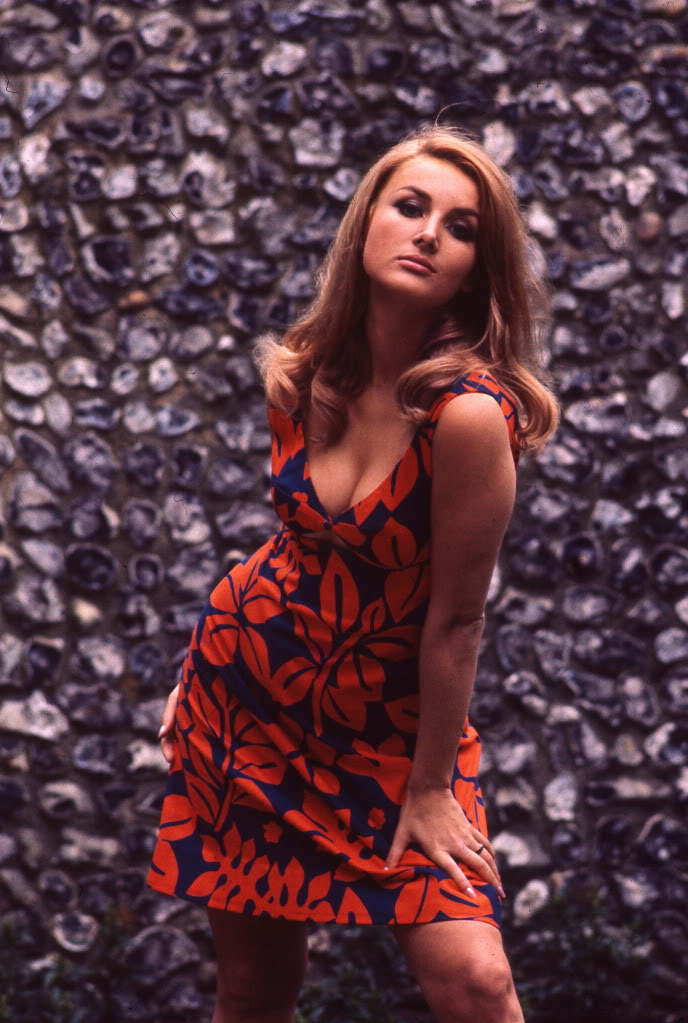Barbara Bouchet is a name that echoes with timeless charm and cinematic allure. A German-Italian actress, model, and dancer, she carved out a singular path across two continents, leaving a lasting impact on both Hollywood and Italian cinema. Her stunning beauty, captivating screen presence, and unshakable confidence made her an enduring icon of European and American film history, particularly in the genre cinema of the 1960s and 1970s. Often regarded as a symbol of sensuality and sophistication, Barbara Bouchet’s story is not just one of fame and glamour—but also of resilience, adaptation, and reinvention.

From War-Torn Origins to the American Dream
Barbara Bouchet was born as Bärbel Gutscher on August 15, 1943, in Reichenberg, a city located in what was then the Sudetenland region of Czechoslovakia, under German occupation during World War II. Her early life was marked by upheaval. In the wake of Germany’s defeat, her family—like many ethnic Germans in Eastern Europe—was displaced. They fled to the United States and settled in San Francisco, where they hoped to build a new life far removed from the destruction of war.
In America, Bouchet’s fascination with cinema and performance began to take root. She entered the entertainment world through television, appearing on local programs, most notably the dance show The KPIX Dance Party. Her radiant looks and graceful poise caught the attention of Hollywood talent scouts, leading to her entry into modeling and eventually film.

Hollywood Beginnings and a Career in Transition
In the early 1960s, Barbara Bouchet began landing small roles in American films and television series. She adopted her now-famous stage name as she transitioned into acting, appearing in popular shows like Star Trek, The Man from U.N.C.L.E., and Batman. One of her more memorable early roles came in the spy comedy Casino Royale (1967), a loose James Bond adaptation in which she played Miss Moneypenny’s daughter.
However, despite her ethereal beauty and screen magnetism, Bouchet found herself typecast in decorative, often secondary roles. Frustrated by the limitations placed on her in Hollywood, she made a pivotal decision in the early 1970s: to relocate to Italy and restart her career on her own terms.

A Star is Reborn: The Italian Years
Italy in the 1970s was a hotbed of genre filmmaking, with a flourishing industry producing everything from crime thrillers (poliziotteschi) to horror (giallo), and steamy sex comedies. It was here that Barbara Bouchet reinvented herself, becoming one of the era’s most recognizable and sought-after actresses. No longer confined to the sidelines, she took center stage, portraying complex, seductive, and often dangerous women.
Her roles in films such as Don’t Torture a Duckling (1972) by Lucio Fulci and Amuck! (1972) with Rosalba Neri cemented her status as a giallo queen. These films, often blending suspense, eroticism, and psychological intrigue, made full use of her unique combination of icy elegance and fiery sensuality. She was both muse and master—captivating audiences while redefining what it meant to be a female lead in European cinema.
Bouchet also made a mark in Italian comedies, particularly the “commedia sexy all’italiana,” where her playful yet powerful screen persona thrived. In these films, she embraced the contradictions of femininity—flaunting confidence and sexuality while remaining in control of her image and performances.

A Woman of Substance Behind the Style
While she became a sex symbol on screen, Barbara Bouchet never allowed herself to be reduced to a mere object. In an era when actresses were often judged solely by appearance, she stood out for her shrewdness and work ethic. Bouchet took control of her own image, choosing roles that offered more than just eye candy appeal and often pushing boundaries in terms of character complexity.
Her off-screen life also reflected this autonomy. Bouchet married Italian producer Luigi Borghese and eventually transitioned into business, founding a fitness company and producing workout videos. She also opened a health club in Rome—an uncommon venture for actresses at the time—proving herself as not only an entertainer but also an entrepreneur.

A Legacy of Versatility and Grace
Barbara Bouchet’s career spans over five decades, and she has appeared in more than 80 films and numerous television productions. Her legacy is not just confined to the sultry roles of the 70s or the glamorous images of the past; it’s also about her remarkable adaptability and refusal to be boxed in.
She represents a bridge between old-school Hollywood charm and European cinematic daring—a rare figure who flourished in both spheres. Her presence in cult classics has ensured her continued popularity among cinephiles, and retrospectives on genre cinema often celebrate her contributions with the reverence they deserve.

Continued Relevance
Even today, Bouchet occasionally returns to the screen, taking on roles that reflect her maturity and gravitas. She has spoken candidly in interviews about aging in the film industry, body image, and staying true to oneself, often becoming a source of inspiration for younger actresses navigating the same terrain.
In recent years, with renewed interest in Italian genre films and feminist re-evaluation of cinema history, Barbara Bouchet’s work has experienced a resurgence in appreciation. Fans, critics, and historians alike now view her not just as a beauty of a bygone era, but as a pioneering woman who carved out her own path in a male-dominated industry.
Barbara Bouchet’s story is one of reinvention, independence, and enduring appeal. From the shadows of World War II to the dazzling sets of Hollywood and Rome, she has lived a life as dramatic and fascinating as any film script. More than just a screen siren, she is a symbol of how talent, vision, and resilience can transcend borders and eras. Through every transformation, she has remained unmistakably herself—a true original in every sense.